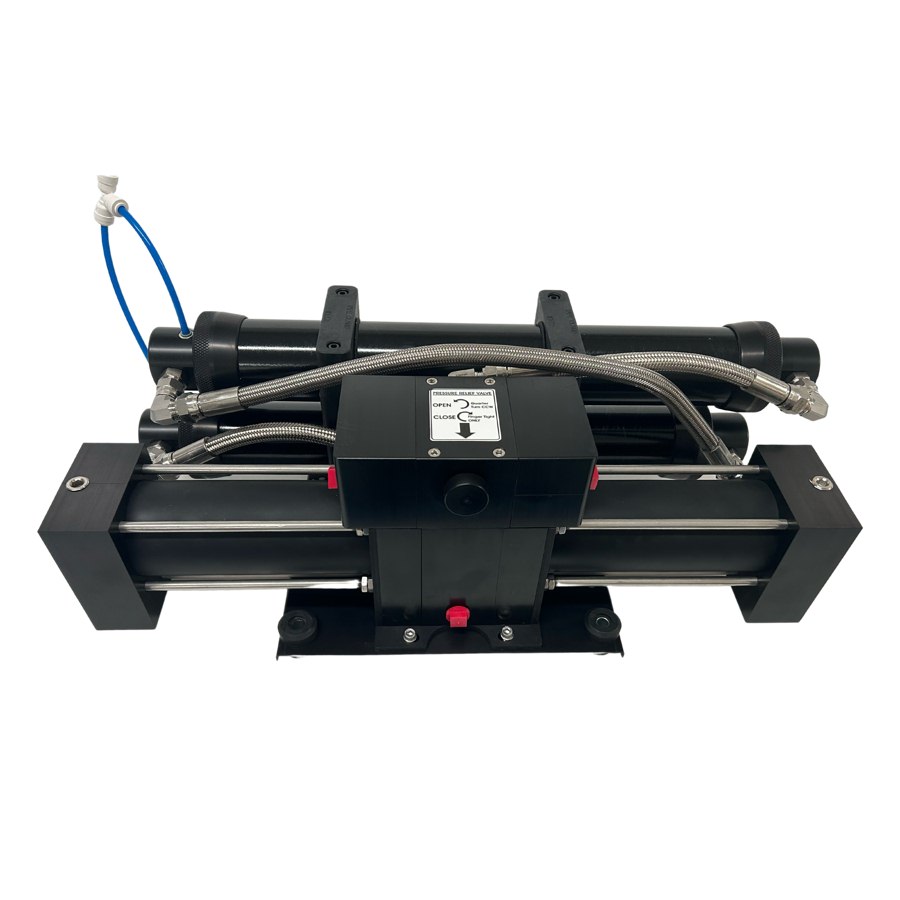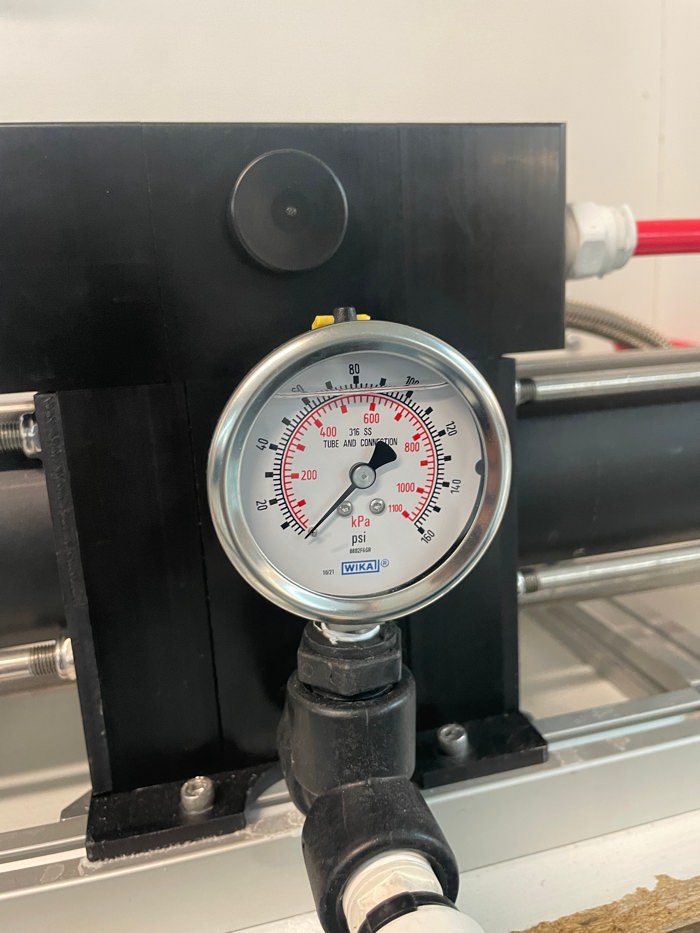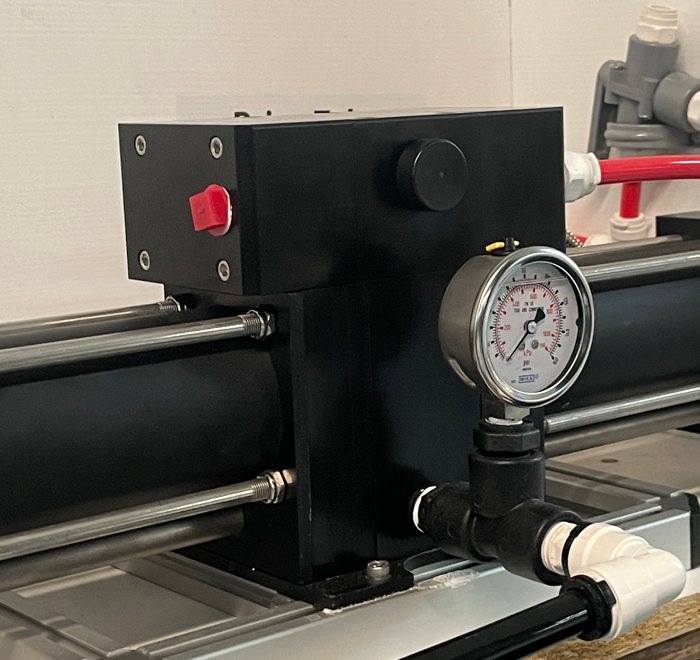David Smith, a pivotal figure in the development of the Clark Pump, first encountered Clark Permar in 1995. Permar, a former machinist turned commercial fisherman, introduced Smith to an energy-efficient watermaker that seemed too revolutionary to be real. The device, built with an energy recovery system, was intriguing enough to spark Smith’s interest, given his background in a marine electromechanical service company specializing in marine Reverse Osmosis (RO) watermakers.
 Permar had engineered a prototype of this energy-saving watermaker, which he installed on a friend’s cruising sailboat. This marked the birth of the first Clark Pump in a marine RO watermaker, a name derived from the patented valving mechanism invented by Permar.
Permar had engineered a prototype of this energy-saving watermaker, which he installed on a friend’s cruising sailboat. This marked the birth of the first Clark Pump in a marine RO watermaker, a name derived from the patented valving mechanism invented by Permar.
The transition from concept to reality wasn’t seamless, however. Permar had no drawn plans—only a mental blueprint. Together, Smith and Permar spent the next year and a half refining the pump’s design and integrating it into a marine water system—a feat that had not previously been accomplished.
The Formation of Spectra
This partnership led to the formation of a new company, Spectra. Smith successfully negotiated with Permar to obtain exclusive rights to produce and market the Clark Pump, a highly energy-efficient watermaker. When the Clark Pump was showcased at a boat show in 1997, competing watermaker companies were skeptical of Spectra’s energy-saving claims. Despite initial criticism, Spectra maintained its presence and, over time, its reputation spread.
The Clark Pump, lauded for its low energy consumption, sparked interest for use in other applications. This led to the development of a solar-powered watermaker for a remote estate in Baja, Mexico, which required a substantial 4000 gallons of water per day. The system was a success, but running the pump continuously at maximum pressure exposed weaknesses in the original design.
 With this realization, Smith and Permar set out to design an upgraded pump that could handle higher flow rates and pressures. Their efforts resulted in the Enhanced Clark Pump, which was successfully employed in a prototype system for Aspen Water Inc. The company, specializing in mobile water purification systems for the military, appreciated the pump’s ability to function under diverse operating conditions.
With this realization, Smith and Permar set out to design an upgraded pump that could handle higher flow rates and pressures. Their efforts resulted in the Enhanced Clark Pump, which was successfully employed in a prototype system for Aspen Water Inc. The company, specializing in mobile water purification systems for the military, appreciated the pump’s ability to function under diverse operating conditions.
The demand for these innovative pumps surged when the military placed a large, urgent order. Despite a lack of established production infrastructure and an influx of imitations, the delivery of the Enhanced Clark Pumps was made possible by Permar’s willingness to produce the first batch.
The Collaboration with Electromaax
Smith later encountered John Stevens of Electromaax while seeking a high-output alternator for a boat. Electromaax, having a full CNC machine shop, was considering constructing their version of the original Clark Pump to improve the performance of their Solarmaax marine watermaker. Smith suggested a collaboration, providing his engineering drawings of the Enhanced Clark Pump.
This partnership allowed Electromaax to refine the design for ease and cost of manufacture without compromising functionality. The newly optimized Clark Pump, now efficient, robust, quiet, lightweight, and more affordable to build, is currently produced by Electromaax, maintaining all of Aspen’s system capabilities.
 Over the years, the Clark Pump has evolved significantly:
Over the years, the Clark Pump has evolved significantly:
- In 1995, handmade prototypes were built with machined bronze cylinder bases, stainless steel cylinders, high-pressure hoses for cylinder return lines, and rubber lip seals on the pistons.
- By 1997, production units incorporated composite cylinder bases and cylinders, built-in pressure relief valves, and aluminum end cap retainer rings. Different displacement models were introduced.
- In 2004, enhancements such as larger internal porting, redesigned check valves, and an upgraded valve function were implemented to improve reliability, efficiency, and noise levels. A more durable construction was achieved with the use of cast nickel aluminum bronze cylinder base.
- In 2021, a new longer cylinder design was introduced to minimize stretch and distortion, reduce weight, and incorporate mounting feet. The pump became overall shorter, and a new base plate was added to increase cylinder strength.
The story of the Clark Pump represents a remarkable journey of technological innovation, collaboration, and resilience. Smith’s integral role in this evolution demonstrates the transformative power of innovative thinking in the marine watermaker industry.